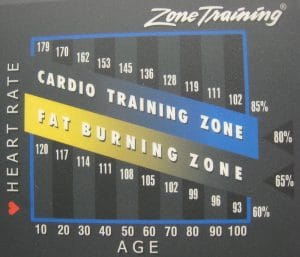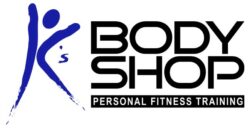It’s that time of year in the Upper Midwest – sub-zero temps, icy commutes, still dark before work and almost dark after work. This means that more people are bringing their workouts indoors for the next few months to ride out another long winter. For those who don’t want to dress in layers, strap spikes to their shoes, or run in the dark, it means making peace with the treadmill (aka “dreadmill” or “hamster wheel”), stationary bike, elliptical, or rowing machine for their cardio endurance training. My clients already know this, but maybe you don’t: interval training is the most effective form of exercise for torching fat, improving fitness, and increasing endurance. No matter what your current fitness level, interval training will help you achieve your weight loss goals, increase your VO2 Max, and improve your aerobic endurance much more effectively than steady state cardio training. What’s different between the fitness newbie and the elite warrior is the intensity of the intervals, the work to rest ratio, and the duration of the workout. If you really want to get results, ignore the inaccurate “fat burning zone” charts that you see on treadmills and stationary bikes! Here are a few tips to create your own efficient and effective workouts on cardio equipment.

Figure Out Your Functional Max Heart Rate
Since the “200 minus your age” equation to estimate maximal heart rate is significantly inaccurate in the majority of the population, ignore the heart rate training zone charts that are pasted on the equipment. The age predicted equation was basically a cool idea that didn’t pan out, but many people (including some physicians and exercise equipment manufacturers) still cling to the idea that you can estimate your training zone based only on your age. Never mind the fact that your maximal heart rate can be significantly different for various forms of exercise (running vs biking vs swimming). The easiest way to figure out your functional maximal heart rate is to pick your favorite piece of cardio equipment and do a graduated test so that you can determine your ventilatory threshold. It’s not as difficult or as scary as it sounds 🙂 Basically, you are going to start at an easy workload and gradually increase intensity every 2 to 3 minutes until you get to the point where you can talk, but not sing. Your heart rate at that point is an estimate of your ventilatory threshold. Divide that number by 0.8 to guestimate your functional max heart rate for that particular activity. You can then plan your training zones around that functional max. Repeat the test every few months and re-adjust your training zones as your fitness improves. I frequently use the Ross protocol on the treadmill or the YMCA cycle test on the stationary bike with my fitness oriented clients.
Ignore the Fat Burning Zones on the Equipment
When we exercise at a lower intensity, we rely more on fat metabolism to fuel our working muscles. At higher intensities, fat metabolism can’t provide the muscles with all of the fuel that they need fast enough and we begin to use more carbohydrate to get the job done. The “fat burning zone” charts and programs on some treadmills and bikes tend to be the easiest workloads, but many people stick with them because they want to burn fat and mistakenly believe that those low intensity workouts are the best option to achieve that goal. Wrong! While low intensity activities may burn a higher ratio of fat rather than carbohydrate, it isn’t burning very much. So, sitting on the sofa watching TV for 30 minutes only requires fat metabolism to keep your bodily functions humming along, but you’re barely burning any calories doing it. Running for 30 minutes will use some fat but also carbohydrate for fuel and you’ll burn a lot more fat (and calories) doing it compared to the lower intensity workouts like casual walking. Higher intensity workouts also tend to keep metabolism elevated long after the workout has ended, meaning that you continue burning fat (and calories) – sometimes for several hours afterward. That’s why high intensity interval training is so popular and effective – it works! So, if you’re going to use a program on a piece of cardio equipment, make it an interval program (frequently called “hills” on a bike or treadmill. Of course, you can put it on manual and make your own intervals where you manipulate speed or resistance yourself – which also helps prevent boredom.
Mix Up Your Workouts
Your body becomes more efficient at doing something the more you do it, largely because of neuromuscular efficiency. This means that if you continually run the same speed on the treadmill for the same distance a few times a week, your body will become more efficient at doing that same thing and you’ll start burning fewer calories doing that workout. This is a good thing for competitive athletes, but not such a good thing if your goal is fat loss. So if your goal is to lose weight, mix up your workouts by doing different cardio exercises (bike, row, treadmill, group fitness class) or different protocols with the same exercise (hill repeats, speed intervals, steady pace runs of varying intensity on the treadmill).
Still not sure what to do? Give me a call and we’ll do an assessment to get you set up on a workout program and get you the results that you want this winter. Don’t wait until spring – the time is now!
